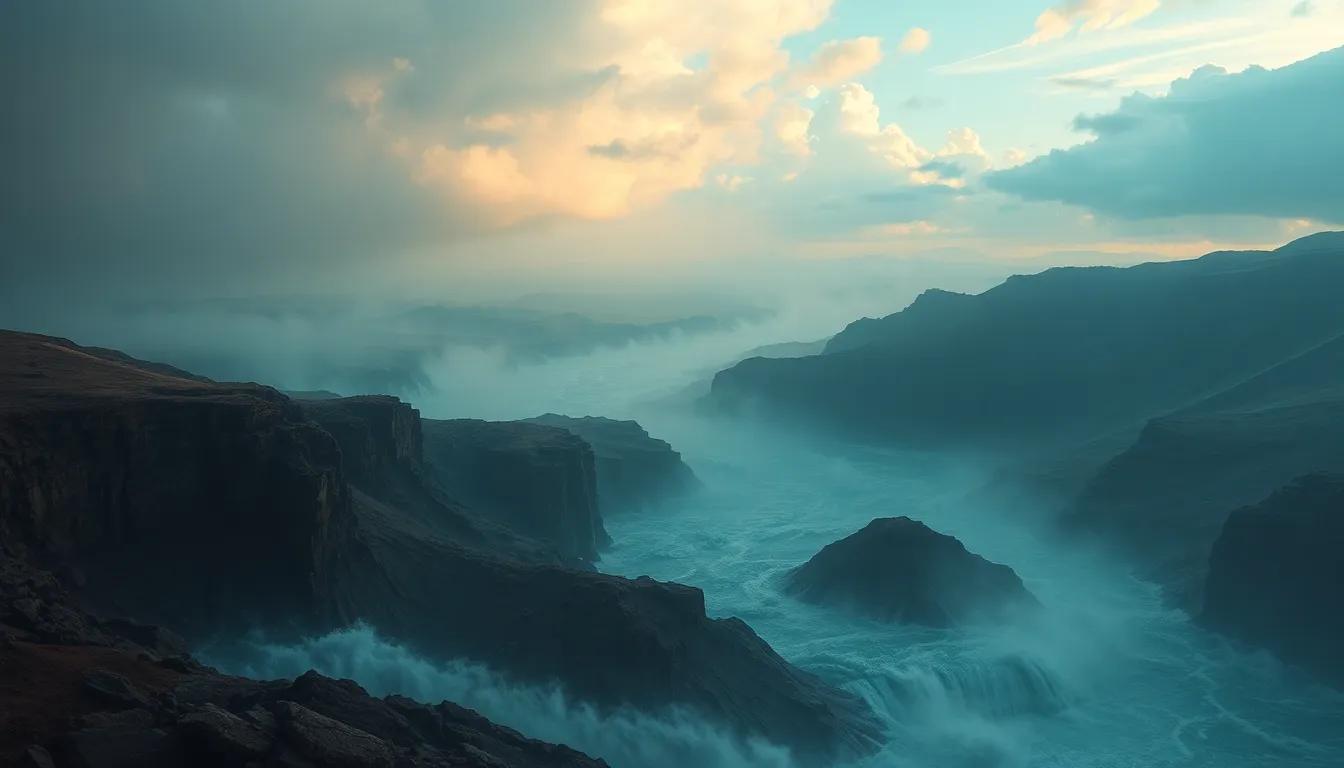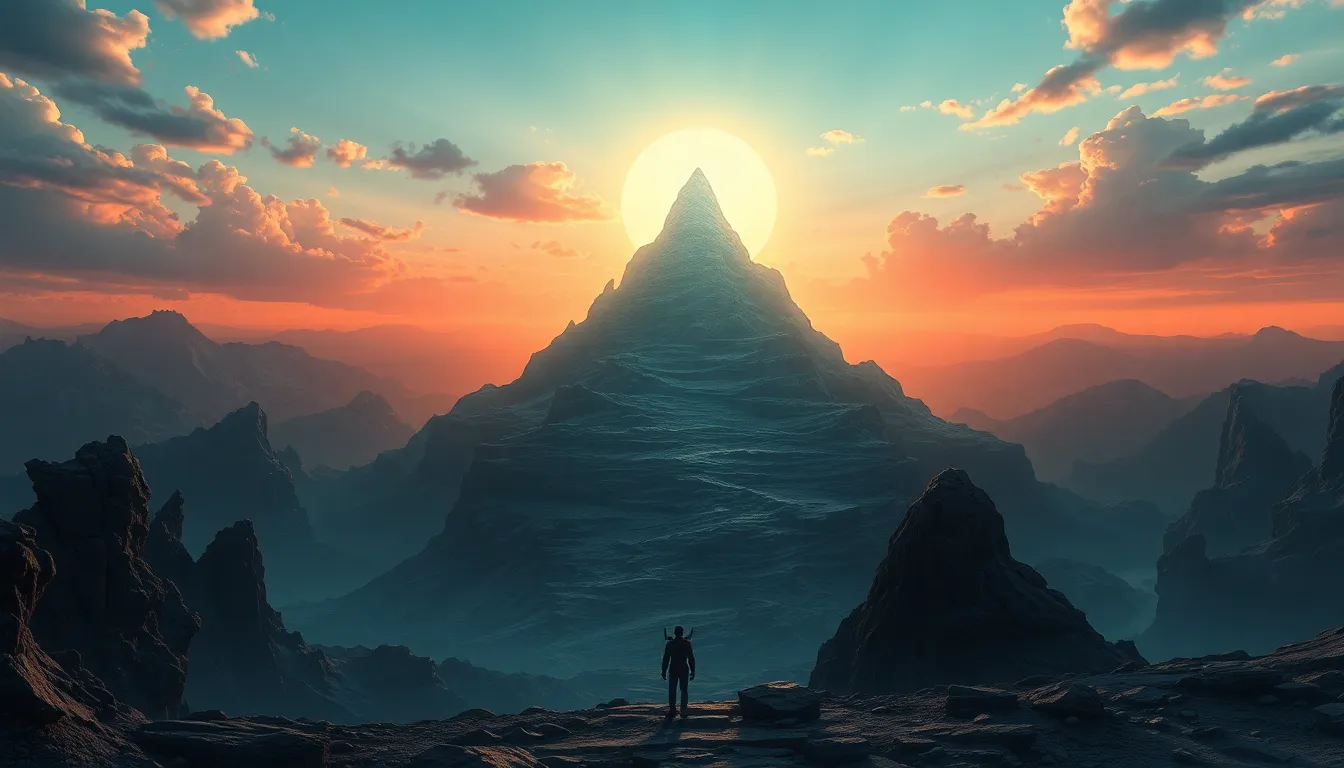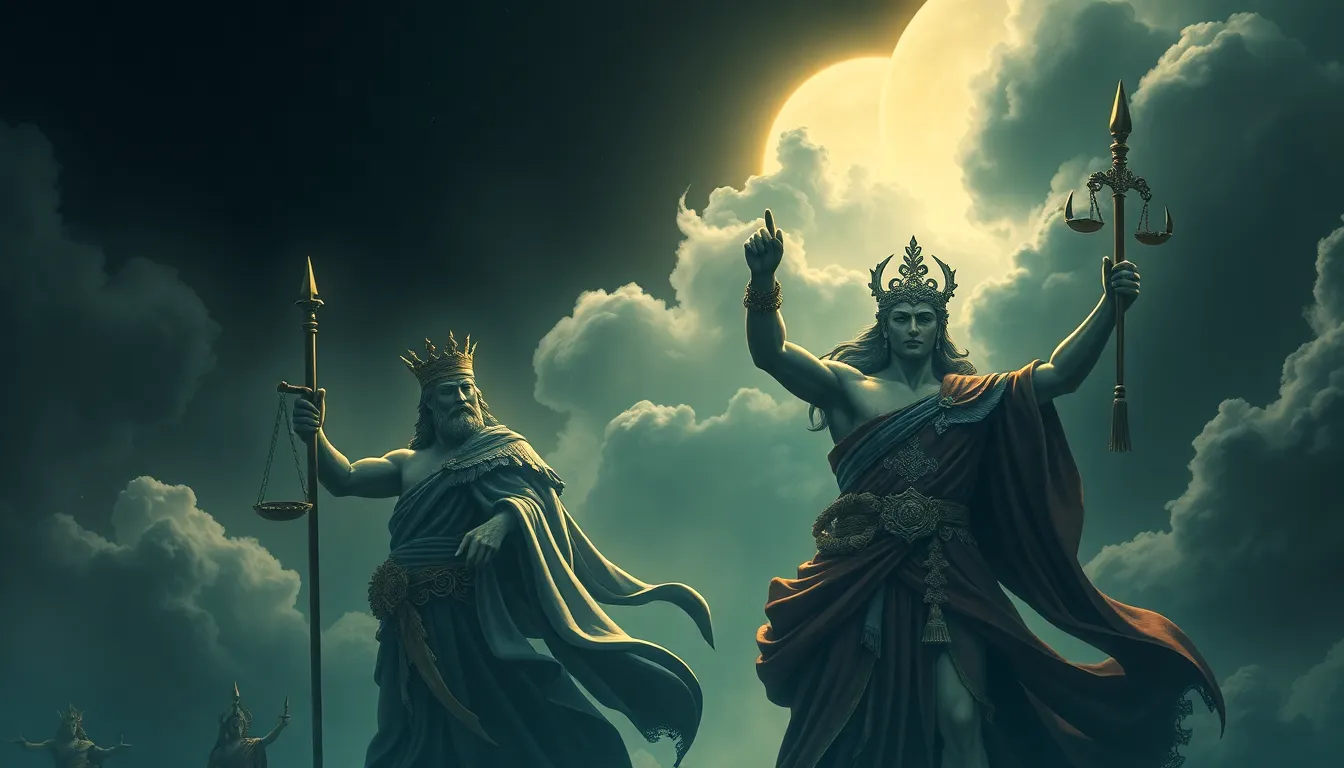The Great Deluge: Unraveling the World’s Most Fascinating Flood Myths
Introduction: The Universal Theme of Flood Myths
Across cultures and civilizations, flood myths have emerged as compelling narratives that resonate with humanity’s collective experience. From the ancient Sumerians to Indigenous tribes in North America, tales of great deluges serve as a reminder of nature’s power and humanity’s vulnerability. These myths often encapsulate moral lessons, cultural values, and reflections on human existence, highlighting the universal themes of survival, rebirth, and divine intervention.
The significance of the Great Deluge in mythology and human history cannot be overstated. Flood myths often symbolize a cleansing or a fresh start, where the old world is purged to make way for new beginnings. This article delves into various flood myths, exploring their origins, meanings, and implications in both ancient and modern contexts.
The Epic of Gilgamesh: The Earliest Known Flood Narrative
The Epic of Gilgamesh, one of the oldest known pieces of literature, contains a flood story that predates the biblical account of Noah. In this epic, Utnapishtim, a character akin to Noah, is warned by the god Ea of an impending flood intended to wipe out humanity. Utnapishtim constructs a massive boat to save himself, his family, and a collection of animals.
This story parallels other flood myths in its themes of divine retribution and survival. It serves as a historical context for understanding how ancient civilizations grappled with the forces of nature and the idea of fate. The tale not only reflects the concerns of its time but also emphasizes the resilience of humanity in the face of catastrophic events.
Noah’s Ark: A Biblical Perspective
The story of Noah’s Ark, found in the Book of Genesis, is perhaps the most well-known flood narrative in the Western world. In this account, God decides to flood the earth due to humanity’s wickedness, sparing only Noah, his family, and pairs of each animal species. Noah’s obedience and faithfulness are central to the narrative, showcasing themes of moral integrity and divine favor.
The symbolism of the ark represents salvation and refuge, while the flood itself signifies a cleansing of sin. The rainbow, as a covenant between God and humanity, serves as a reminder of hope and the promise of new beginnings. This narrative has influenced countless interpretations in literature, art, and religious teachings, embedding itself deeply into cultural consciousness.
The Hindu Tale of Manu and the Fish
In Hindu mythology, the story of Manu and the fish presents another fascinating flood narrative. According to the legend, Manu saves a fish that later reveals itself as the god Vishnu. The fish warns him of an impending flood that will devastate the earth, instructing Manu to build a large boat to save himself, his family, and seeds of all plants.
This tale highlights the cyclical nature of creation and destruction in Hindu philosophy. The flood serves as a purifying force, leading to the rebirth of life on earth. Manu’s journey is symbolic of human responsibility towards nature and the divine, emphasizing how one’s actions can lead to salvation or destruction.
The Mesoamerican Flood Myths: Quetzalcoatl and the Great Flood
Mesoamerican cultures, including the Aztecs and Maya, also have rich flood myths. One prominent story involves Quetzalcoatl, the feathered serpent deity, who is associated with creation and rebirth. In these narratives, the world is often flooded to cleanse it of humanity’s sins, leading to the emergence of new life.
- Aztec Mythology: The Aztecs believed that the first world was destroyed by a great flood, with Quetzalcoatl saving humanity by creating a new race of people from the bones of the previous inhabitants.
- Mayan Beliefs: The Mayan creation myth also involves a flood, emphasizing themes of renewal and the cyclical nature of existence.
The role of deities and the concept of rebirth are central to these narratives, reflecting cultural values surrounding creation, destruction, and the relationship between humanity and the divine.
Indigenous Flood Legends: Stories from North America
Native American cultures are rich with flood legends that vary across tribes. These stories often focus on survival, with themes of adaptation and resilience in the face of catastrophe. For example:
- The Ojibwe Legend: In this narrative, a great flood covers the earth, and a man named Nanabozho saves himself and other animals by climbing a mountain.
- The Hopi Tale: The Hopi people tell of a flood that destroys the earth, with survivors being guided to safety by spiritual beings.
These myths reinforce the importance of harmony with nature and the lessons learned from past calamities, underscoring the adaptability of human spirit in challenging times.
The Flood in Ancient Greek Mythology: Deucalion and Pyrrha
In Greek mythology, the tale of Deucalion and Pyrrha is a striking parallel to flood narratives found in other cultures. Deucalion, the son of Prometheus, receives a warning about a flood from Zeus, who seeks to cleanse the earth of its wickedness. He constructs a vessel to survive the deluge, and after the waters recede, he and his wife Pyrrha repopulate the earth by throwing stones that transform into humans.
This myth emphasizes themes of rebirth and resilience, highlighting the idea that from destruction comes the potential for renewal. Deucalion and Pyrrha’s story serves as a testament to humanity’s enduring spirit and the capacity to rebuild after catastrophe.
Scientific Perspectives: Theories Behind Global Flood Myths
Scholars have long examined the geological and archaeological evidence behind ancient flood myths. Various theories suggest that significant regional flooding events may have inspired these stories. Some of the scientific perspectives include:
- Glacial Melting: The end of the last Ice Age around 10,000 years ago caused sea levels to rise dramatically, potentially leading to widespread flooding.
- Local Flood Events: Major rivers, such as the Tigris and Euphrates, experienced catastrophic floods that could have influenced the narratives of civilizations living nearby.
- Catastrophic Events: Some researchers propose that tsunamis or other natural disasters could have contributed to the formation of flood myths across various cultures.
These theories highlight the intersection between natural history and cultural storytelling, suggesting that the myths may be rooted in real experiences of humanity facing nature’s wrath.
Modern Interpretations: Flood Myths in Literature and Pop Culture
Flood myths continue to capture the imagination of contemporary society, appearing in literature, film, and popular culture. Modern interpretations often reflect current environmental concerns and humanity’s relationship with nature. Examples include:
- Literature: Novels like “The Grapes of Wrath” by John Steinbeck explore themes of survival and resilience against natural disasters.
- Film: Movies such as “2012” and “Noah” reinterpret ancient flood narratives, embedding them within modern contexts of climate change and human responsibility.
- Art: Contemporary artists often use flood imagery to comment on environmental degradation and the fragility of existence.
The enduring impact of these stories reflects humanity’s ongoing fascination with the themes of destruction and renewal, as well as the pressing need for environmental consciousness.
Conclusion: The Lasting Legacy of Flood Myths
The exploration of flood myths reveals a shared human experience that transcends cultural boundaries. These narratives are not merely stories but reflections of our deepest fears, hopes, and connections to the natural world. They serve as reminders of our vulnerability in the face of nature’s power, as well as our resilience and capacity for renewal.
In understanding these myths, we gain insight into our cultural identities and the lessons they impart regarding environmental stewardship. As contemporary society grapples with climate change and ecological challenges, the wisdom embedded in these ancient narratives remains relevant, urging us to reflect on our actions and their consequences for future generations.



